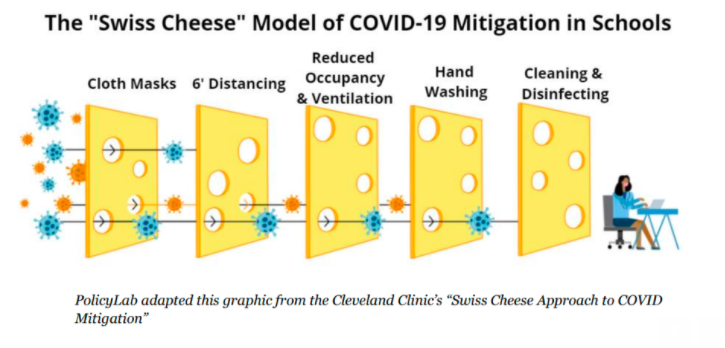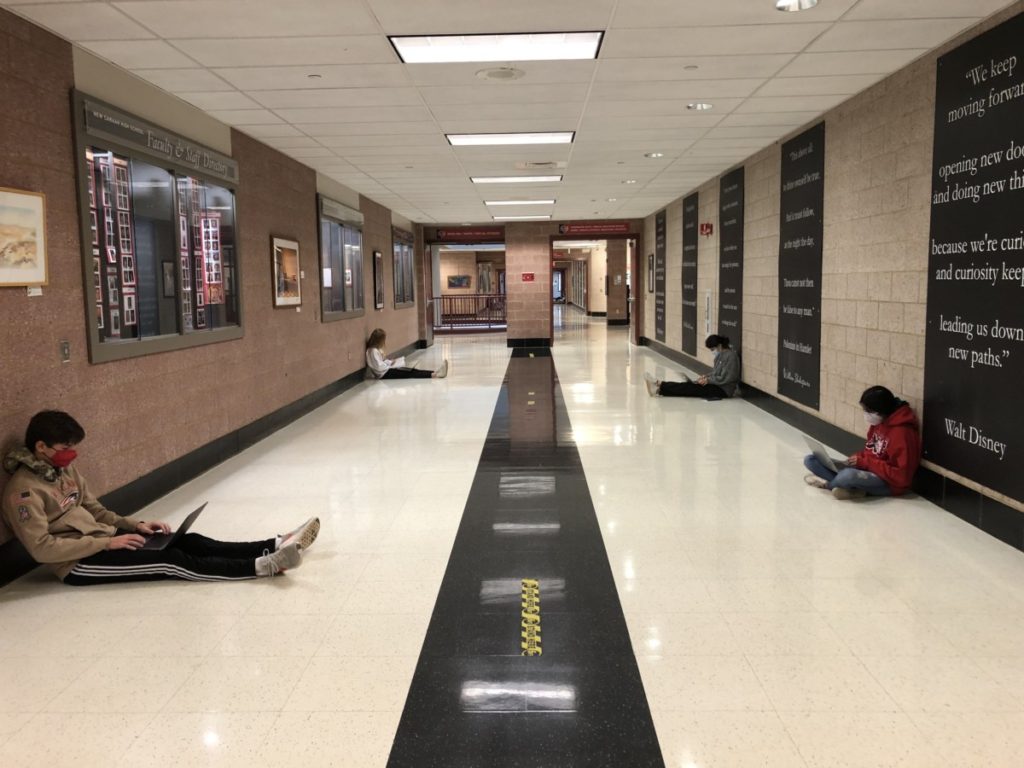Aleena Nasruddin, Editor-in-Chief
@aleenacourant
Olivia West, Editor-in-Chief
@oliviawcourant

As of Tuesday, December 15, New Canaan Public Schools have reported 8 students with positive cases at the high school currently isolating. Additionally, 42 high school students are in quarantine due to close contact with a student who tested positive. There is currently one staff member who tested positive and is isolating and 7 staff members in quarantine due to close contact with a positive case.
On Monday, November 16, Superintendent Bryan Luizzi announced that the high school will return to hybrid learning, identical to the structure followed in the beginning of the year. According to Dr. Luizzi, the reopening committee made the decision following New Canaan’s recent trends, which have put the town into “Red Alert” Status, with over 15 positive cases per 100,000 people, and the schools into “Orange Alert” Status, with 10-24 positive cases per 100,000 people. Students in grades pre-kindergarten to 8 remain fully in-person.
Dr. Luizzi said that the hybrid format is intended to reduce the population density in the high school by decreasing the number of students in the building by half. He said that this would, in turn, improve the efficiency of the ventilation system, strengthen cleaning protocols, and enhance social distancing protocols. “I believe that our schools are safe now because we have our masks and are following our mitigation strategies, which is why they are still open,” he said.
He shared a swiss cheese model in his email to demonstrate the mitigation strategies the school is using to protect students from the virus, such as washing your hands, maintaining six feet apart, and wearing a mask. “The swiss cheese example shows each mitigation strategy as a layer of swiss cheese,” Dr. Luizzi said. “Strengthening the mitigation strategies reduces the size of the holes in the slice, which makes it less likely for the virus to find its way through.”
Dr. Luizzi said the mitigation strategies proposed in the model are important to follow to reduce the exponential spread rate of the virus, especially since it can transfer from one person to three people. “We’re not just following these mitigation strategies because someone is telling us to do them. We are doing them because they work,” he said.

In addition to the governor’s executive order, 9-I, that requires out-of-state college students to quarantine upon return, Dr. Luizzi asks that returning college students take a covid test offered by their college before they return. “In the long-term, we have to besiege the returning college students to follow the guidelines from the CDC, the department of public health, the first selectman, and me,” he said. “Respect the limitations on gathering size, follow curfews, and wear masks to keep us safe. The cumulative result of our collaborative effort will determine how safe we are, how many people get sick, and how many people die from this disease.”
Dr. Luizzi also said he is concerned about the staff having to quarantine or stay home, as other towns begin to shut down. “Our staff may have children in other closed districts, so they may need to stay home. We can get to a place where we have a number of people quarantined and we can’t perform any core functions, like driving students home, disinfecting our cafeterias, or cleaning our classroom,” he said. “If we can’t clean our buildings every night, we can’t keep them open.”
Nurse supervisor Janet Reed said that contact tracing is a key tool to prevent the spread of the virus. “We have put the message out to not come to school if you’re sick, but the virus can still spread two days before a person has any symptoms,” she said. “We have to look at who a person that tested positive could have potentially exposed the virus to, including who they were sitting with at lunch, in the classroom, and on the bus.”
Ms. Reed said that the transition back to the hybrid schedule made contact tracing easier and decreased the risk of potential coronavirus spread in the school. “One of the key tools is density. If the classes are packed, we have to quarantine more people than if students are in hybrid and can spread apart,” she said. “As we know, staying six feet apart is a lot more difficult when there are 1300 people in the building than if there are half as many.”
In terms of managing the spread of the virus over the holidays and with the return of college students, Ms. Reed said that she is worried that college may bring the virus home with them. “Many colleges are encouraging their students not to travel home, but rather stay on campus. People are also getting tested before they go home, but that isn’t always accurate and exposure may come after the test is taken,” she said. “Keep your Thanksgiving gatherings to just your household. If you have more people attending, take your celebrations outside. As always, socially distance, wash your hands, and wear a mask.”
Dr. Luizzi said that he has been thinking about three goals to guide his decisions: to keep everyone safe, to provide a world-class education, and to keep our schools open. “We are working so hard everyday to do what we do to keep our schools open,” he said. “Those are the goals in order of priority. If that means we need to close our schools to keep everyone safe, that’s what we are going to do.”




